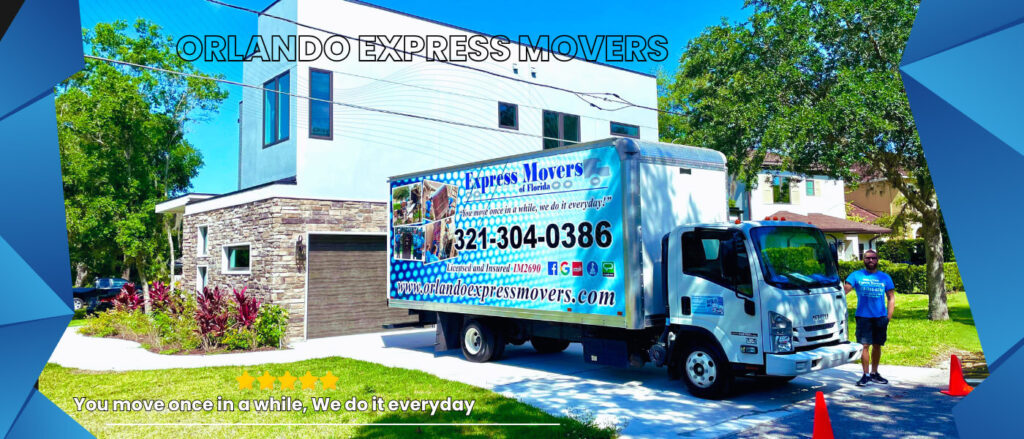Giving Back and Minimizing Waste: Donating and Recycling Items During Your Move
| Getting your Trinity Audio player ready... |
Moving to a new home is an excellent opportunity to declutter and simplify your life. As you sort through your belongings, you’ll likely come across items that you no longer need or want. Instead of throwing them away, consider donating or recycling these items. Not only will you reduce waste, but you’ll also make a positive impact on the environment and help those in need. In this blog post, we’ll explore various strategies for donating and recycling items you no longer need during your move.
1. Create a Moving Checklist
Before you start the packing process, create a moving checklist that includes a section for decluttering and donating items. This checklist will help you stay organized and ensure that you don’t overlook any belongings that can be put to better use by others.
2. Sort Through Your Belongings
Begin by sorting through your belongings room by room. As you go through your items, consider whether you still use or need each one. Be honest with yourself and ask whether the item holds sentimental value, is still functional, or has a practical purpose in your life. Separate items into three categories: keep, donate, and recycle.
3. Identify Donation Opportunities
Once you’ve identified items you no longer need or want, the next step is to find suitable donation opportunities. There are several ways to donate items, depending on what you’re giving away:
a. Local Charities: Research local charities, such as Goodwill, Salvation Army, or Habitat for Humanity, that accept a wide range of donations. These organizations often have drop-off locations or offer pick-up services for larger items.
b. Thrift Stores: Many thrift stores accept clothing, furniture, and household items. These items are then sold to support charitable causes or benefit the local community.
c. Furniture Banks: Furniture banks are organizations that collect and redistribute furniture to families in need. They are a great option for donating larger pieces of furniture that are still in good condition.
d. Schools and Nonprofits: Local schools, community centers, and nonprofit organizations may be interested in donations of items like books, art supplies, or sports equipment.
e. Homeless Shelters: Consider donating gently used clothing, blankets, and personal hygiene items to local homeless shelters. These organizations often rely on community support to provide essential supplies to those in need.
f. Animal Shelters: Don’t forget about your local animal shelters, which often accept donations of old bedding, towels, and pet supplies.
4. Check Donation Guidelines
Before you donate your items, it’s essential to check the guidelines and requirements of the organizations you’re considering. Different charities and donation centers have specific policies regarding the condition of items, acceptable donation hours, and whether they offer pick-up services. Adhering to these guidelines will make the donation process smoother and more efficient.
5. Schedule Pick-Up Services
For larger items like furniture or appliances, consider scheduling pick-up services provided by some charities and organizations. This service is convenient and ensures that your items will be put to good use by those who need them.

6. Recycle Responsibly
In addition to donating, recycling is another eco-friendly way to dispose of items you no longer need. Recycling helps reduce the environmental impact of waste and conserves resources. Here are some common categories of items you can recycle:
a. Electronics: Many communities have e-waste recycling programs that accept old electronics like smartphones, computers, and televisions. These programs ensure that potentially hazardous materials are disposed of safely.
b. Paper and Cardboard: Newspapers, magazines, cardboard boxes, and office paper are all recyclable. Be sure to separate paper from other waste, as recycling programs typically require a clean and uncontaminated source.
c. Plastic and Glass: Most communities have recycling programs for plastic and glass containers. Check your local recycling guidelines for information on what types of plastics are accepted and how they should be prepared for recycling.
d. Metal: Aluminum and steel cans, as well as other metal items like old appliances, can often be recycled. Some recycling centers may even offer compensation for scrap metal.
e. Clothing and Textiles: While not recyclable in the traditional sense, many areas have textile recycling programs that collect used clothing and textiles. These materials are then repurposed into new products.
7. Dispose of Hazardous Materials Properly
Certain items, such as old paint, household chemicals, and batteries, are considered hazardous waste and should not be thrown away in the regular trash. These items can be harmful to the environment and should be disposed of according to local hazardous waste disposal guidelines. Your local municipality or recycling center can provide information on where and how to safely dispose of hazardous materials.
 8. Host a Garage Sale or Yard Sale
8. Host a Garage Sale or Yard Sale
If you have valuable items that you no longer need but are in good condition, consider hosting a garage sale or yard sale. This can be an effective way to downsize your belongings while making some extra money. Be sure to advertise your sale online and through local community channels to attract potential buyers.
9. Trade or Sell Items Online
The internet offers a variety of platforms for selling or trading items you no longer need. Websites like Craigslist, eBay, Facebook Marketplace, and Letgo provide a platform to list your items and connect with potential buyers or traders in your community. It’s a convenient way to reduce your possessions and make some cash in the process.
10. Repurpose and Upcycle
For items that may not be suitable for donation or recycling, consider repurposing or upcycling them. Get creative and find new uses for old items, transforming them into something functional or decorative. There are numerous DIY tutorials and inspiration online to help you repurpose items and give them a new lease on life.
11. Take Before-and-After Photos
Document your donation and recycling efforts by taking before-and-after photos of the items you’re giving away or recycling. Share your journey on social media or with friends and family to inspire others to follow your lead in reducing waste and giving back to the community.
12. Teach Children About Donation and Recycling
Moving is an excellent opportunity to teach your children about the importance of donation and recycling. Involve them in the process and explain why it’s essential to reduce waste and support those in need. Encourage them to select items they no longer need to donate, helping them develop a sense of empathy and responsibility.
In conclusion, donating and recycling items you no longer need during your move is not only an eco-friendly and responsible approach but also a way to give back to your community. By carefully sorting through your belongings, identifying donation opportunities, and adhering to donation guidelines, you can make a positive impact on the lives of others. Additionally, recycling items responsibly and disposing of hazardous materials in the correct manner helps protect the environment. By adopting these strategies, you can declutter your life, reduce waste, and contribute to the well-being of your community and the planet.

